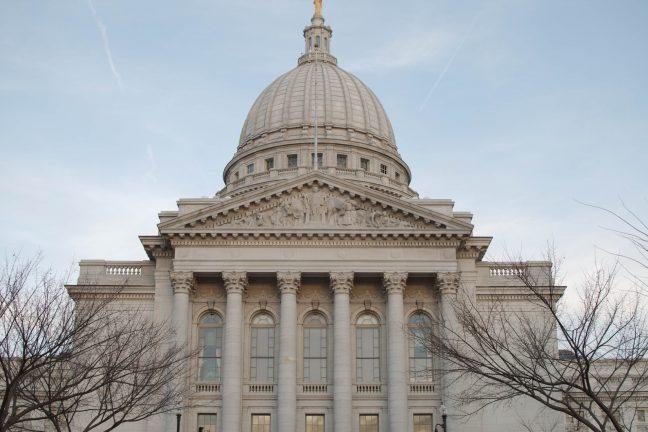According to a press release by the Wisconsin Policy Forum, 76 percent of Wisconsin counties face a “significant shortage” of psychiatrists, with 20 having no psychiatrists at all.
The shortage and subsequent lack of care are not surprising to Angela Janis, University Health Services co-director of mental health services and director of psychiatric services.
“[Psychiatric professionals have] known it’s sort of coming — and that it’s also probably going to get worse before it gets better,” Janis said.
Janis cited a few different reasons why this shortage came about, one being the sheer influx of patients. That influx, she said, has to do with the increase in mental health care parity.
More than ever, people have the ability to see a mental health care provider and seek the care that they need, Janis said.
According to a 2016 report on Medicaid from the Wisconsin Department of Health Services, the average statewide utilization of behavioral health services for Medicaid members was 26 percent for children, and 29 percent for adults.
The decrease in social stigma around mental health has also led to the increase, Janis explained.
“A really good thing that’s been happening recently is the stigma around seeking mental health treatment has decreased,” Janis said. “That’s great, but it does mean we have another stream of new patients.”
The opioid epidemic, Janis said, has also caused more people to seek addiction treatment.
According to a March 2018 report from the National Institute on Drug Abuse, the Midwest saw opioid overdoses increase 70 percent from July 2016 to Sept. 2017.
The epidemic, Janis said, has rendered “more [patients] than we’ve been used to and more than we have beds for.”
The last source of patients, Janis said, comes from an increase in diagnoses. Overall, there has been an increase in mental health issues across the board, she said, and the demand for care is high.
According to a report from the National Institute for Mental Health, 18.3 percent of all adults in the United States were categorized as living with any type of mental illness in 2016. The same report said young adults (18-25 years) had the highest rate of mental illness, at 22.1 percent.
Janis added the influx of patients, while putting a strain on the health care system, is not the entire issue. There simply are not enough psychiatrists available, she said.
“We really don’t have enough professionals to meet the demand we’re seeing, and there’s kind of a limit as to how many psychiatrists we can train,” Janis said. “After medical school, there’s residency, and the number of residency slots in Wisconsin is pretty stagnant. It’s hard to get new slots, so it’s hard to get psychiatrists up and practicing in-state.”
When residents are trained in-state, they tend to stay in that state for work, Janis said. With residency falling during a key time in life, many residents want to “lay down roots,” settle down and have a family, Janis said.
“[Residents] have a network. They’ve learned that state’s system, and its hard to replace or replicate all of that if you move out of state,” Janis said.
Janis cited herself as an example. Having received her B.A. from Washington University and her M.D. from the University of Illinois, she ended up in Wisconsin, the state where she completed her residency. Eleven years later, and she’s still here.
In terms of solutions, Wisconsin has taken steps to remedy the situation, Jennifer Miller, a spokesperson at the Wisconsin Department of Health Services, said.
“We would point to the Graduate Medical Education Program as a way that the state of Wisconsin is increasing the number of psychiatrists, as well as general practice physicians, across the state — especially in rural and underserved areas of the state,” Miller said.
The Graduate Medical Education Program provides residency grants of up to $75,000 to residents in a variety of fields, including psychiatry. Priority for funding is given to programs in rural communities. The hope is that as medical residents receive funded training in-state, they choose to remain in-state to practice long-term, Miller explained.
Miller also cited the expansion of the Child Psychiatry Consultation Program as helping with the psychiatrist shortage.
“[The program] helps primary care providers consult with child psychiatrists to aid in diagnosis and management of cases, provides a system to refer patients, and provides training to primary care providers in mental health conditions,” Miller said.
This service is now available in 41 of Wisconsin’s 72 counties.
Janis said she has ideas for how to combat the shortage as well.
“One thing we could do is increase salaries. There are lots of places on the East and West Coast where [psychiatrists] feel they aren’t compensated enough,” Janis said. “If we compensated them more, they’d be much more inclined to work here.”
Janis added that there are proposals making their way through the legal system that could be beneficial. It has been proposed that tax relief could be offered to psychiatrists who relocate to Wisconsin from out of state, she said, but the proposal has yet to progress.
When discussing Madison specifically, Janis said the shortage has not been apparent until recently.
“Psychiatrists tend to relocate to urban areas. Up until recently, Milwaukee and Madison seemed in a better state than the rest of Wisconsin,” Janis said. “Lately, given the increased demand, we started to see those significant shortages here in town, too.”
Over the past five years, Janis said UHS has seen a 35 percent increase in students served for mental health issues, and is doing what it can to aid the increase in demand.
An additional provider was hired last year, Janis said, and while the rest of Madison faces an average wait time of nine months to see a psychiatrist, the current wait at UHS is three to four weeks, with seats reserved for emergency appointments.
“The situation at UHS is still better than the rest of the state,” Janis said.


